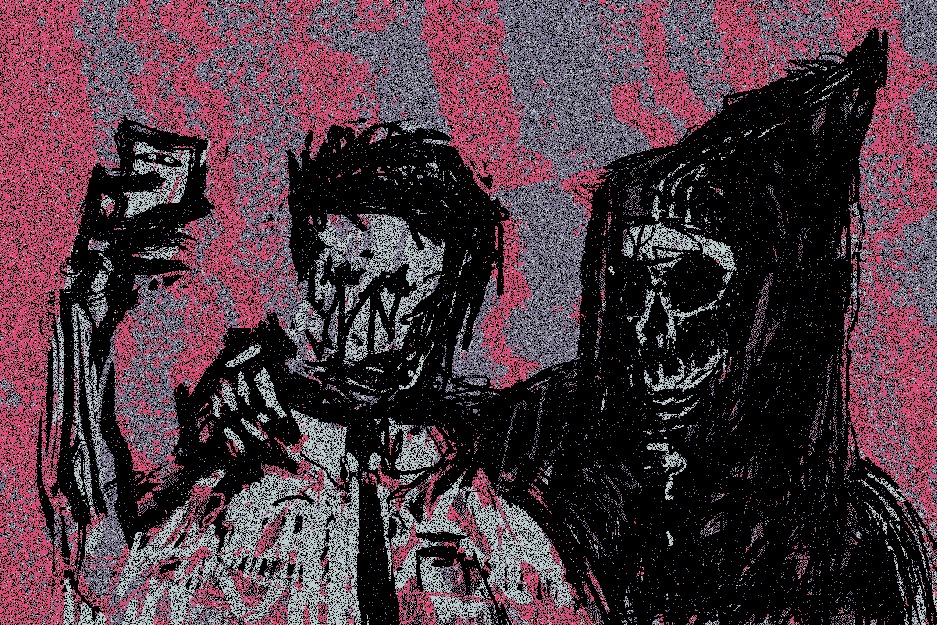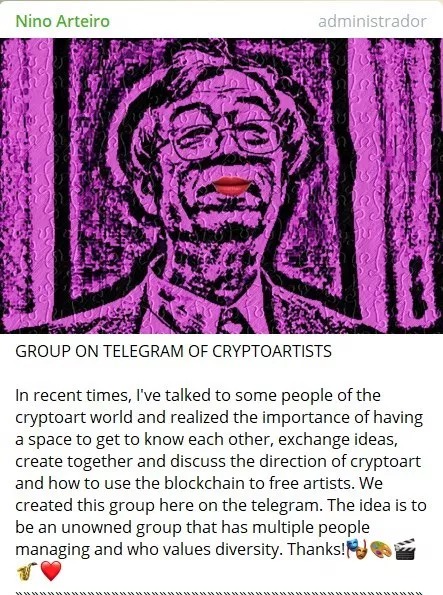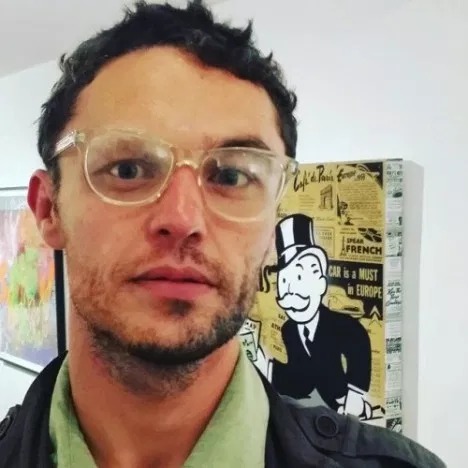What are the main concerns nowadays for crypto artists? What new challenges will they face? Let's listen to them. A very interesting conversation among various of the most popular crypto artists.
Crypto art, as a new aesthetic and philosophical discipline, faces its own vicissitudes. Following the publication of the article «Blockchain and Crypto in Contemporary Art», an interesting discussion about the true benefits of this technology for artists began in the group of crypto artists that we share in Telegram.
Crypto art and reproduction
New technologies no longer fit the models of the past. Thanks to blockchain and cryptography, art faces new challenges every day. Peter Bock, a French mad scientist, bioinformatician in training and tech geek, reflected on the fact that digital works of crypto art can be reproduced:
«All my art is CC BY, so reproducibility has never been a problem, given it's implied. I think if it's about making sure a work can't be reproduced / stays limited edition, there really isn't much choice other than sending the buyer of the digital work a physical copy with signature.
Although I guess if the work itself was steganographically encrypted with the artists signature in such a way that copying it would degrade the signature, maybe. Crypto art remains much more based on supporting the artist for now. Though I imagine platforms like SuperRare.co can partner with other platforms to provide extra benefits. Like "official" certified VR frame objects in Decentraland that would allow the owner to use their metals account to display works they own/made in a verifiable way. Things like that.
It's not like physical works don't deal with the same problems. There are master forgers (or have been at the least... I don't know of any modern ones but I'm sure there are some) capable of reproducing artworks to such a degree you'd need a scientist, not an expert art critic, to verify authenticity».
Peter Bock
«Draconian Hoard» (Peter Bock)
Does crypto art solve the problems?
Yonat Vaks makes art about the memories and personal stories that contain in their interior the history of all humanity. Yonat was critical of the benefits blockchain brings to artists:
«You talk about how the blockchain can solve problems of origin, copyright and ownership and eliminate the need of third parties. There are still problems with this that haven't been solved. Once a work is on the blockchain, of course you can control its scarcity but one of the problems is that no one can control who puts it on the blockchain. Anyone can take an artists work and claim ownership. Someone already proved that point by putting on the blockchain that they painted the Mona Lisa.
You would still need a third party to claim authenticity in a way. I think it even makes it easier to claim wrong ownership. For physical arts this is even a bigger problem because there is still no way to connect the content on the blockchain to the physical artwork itself, so someone can still falsify an artwork and show 'proof of authenticity' using the original's information on the blockchain.
I'm also ambiguous about the tokenization of artworks. I've listened to conferences talking about this and they basically talked about the investment values of it. At one point it seemed like everyone forgot they were talking about art and they talked like it was just another commodity, downsizing the cultural value of art in itself. There are a lot of players in this field and blockchain is great but it's not a magic solution and I don't see it as only having beneficial outcomes for art and artists. I feel its our place to speak out about these things as well».
Yonat Vaks
«Portrait of a Crypto Miner» (Yonat Vaks)
Platforms for tokenizing crypto art
What is the most appropriate model for tokenizing art? Lucho Poletti, a North American crypto artist who spreads the word of crypto through propaganda, also expressed his concerns in this regard:
«I have a few of my own concerns and hesitations about tokenizing my artwork. One comment about your point that there is still no way to connect the content on the blockchain to the physical artwork itself, is that there are people working on this aspect. One that comes to mind, Blockchain Art Collective, uses physical NFT chips as certificates to connect the physical art pieces to the info recorded on the blockchain.
My main concerns lie in the tokenized art honestly. Maybe it's naive but my hope is that at some point, a community like we have here will be able to come to a consensus that there is a "best" platform to tokenize artwork and we will all be confident enough to register our art there... Then we all use X platform on X blockchain and work together to make it the go-to spot for tokenized art/crypto art. Or maybe that never happens. Like I said, probably a naive thought».
Lucho Poletti
«Bitcoin for Argentina» (Lucho Poletti).
Are platforms necessary?
Crypto art is being defined every day in a continuous process of renewal. On the other hand,وЮ ○三 \( ̄^ ̄\) added:
«A platform isn't even necessary, a standard like ERC-721 ought to be enough. I definitely feel you on the fear of deprecation, ETH 2.0 is coming and it is still unknown what will happen with everything within the existing ecosystem. It may get migrated as a shard or become frozen forever. NFT's on XCP are also a valid option, not to attach myself too firmly on Ethereum».
وЮ ○三 \( ̄^ ̄\)
And ䷰䷸䷣䷝䷞䷊䷾䷝ responded:
«I'm a firm supporter of the usage of XCP. There are countless advantages over ETH, but information this valuable is not to be cast on the masses. That is to say, I'm at a point in my life where I no longer try to convince others. The problems/issues faced in this niche of a niche are so complex and multifaceted that the expression of such in a chatting format is disingenuous. In order to share complex perceptions, whitepapers or conversations IRL are most conducive. That being said, a proper balance of concepts and practices will only be more evident given time. Trial and error makes winners and the losers just try to copy other's success».
䷰䷸䷣䷝䷞䷊䷾䷝
How to prevent others from tokenizing your work
XCOPY, a London digital artist and crypto enthusiast, with extensive experience in the world of crypto art, told us how others had tokenized his/her own work:
«I’ve already found my work tokenized by others on DigitalArtChain and Codex Protocol for sale on OpenSea. I haven’t used either site before. I have tokenized work on SuperRare, KnownOrigin, Rare Art Labs and Digital Objects. All of them made some effort to establish my identity. Not exactly a decentralised solution but also not one that scales, so I’d imagine in the future the community could vote to remove fake content or something along those lines.
I sold some work which I’d tokenized using Ascribe a while back. When I found out it was no longer in development I sent everyone who’d bought Ascribe editions some work on SuperRare. I didn’t tokenize the exact same work, I made upgrade tweaks and in most cases they got a totally new piece. I couldn’t do this for SuperRare as I don’t know who bought what. However, if a superior blockchain came along or everyone moved to Bitcoin, people could send me their ETH tokens and I could reissue new variations of the work on the new platform».
XCOPY
 «Last Selfie» (XCOPY).
«Last Selfie» (XCOPY).
A solution for everyone?
How to tokenize art? Faced with these concerns, Duncan Johnson, an artist who reuses wood to create works of great beauty, says:
«Thing is there’s rarely a one size fits all solution of any tech in any industry. A platform that’s perfect for digitized art is unlikely going to be perfect for one that’s designed specifically for physical art. Have you checked out Blockchain Art Collective? It’s good for physically labelling pieces of art and maintaining provenance».
Duncan Johnson
«Bitcoin Backgammon» (Duncan Johnson).
Moving beyond the old formulas?
Then, Nino Arteiro, Brazilian evangelizer of crypto art, creator of the group and author of the «Crypto Artist Manifesto», tilted at the old formulas:
«I believe that crypto artists should create new ways of spreading their works and crypto art. The old way of spreading the art no longer serves us! So we have the challenge of creating the new. Now we are our own gallery! I believe that the Internet has become the great tool of crypto artists and that it currently has the same role as the traditional galleries and auction houses. Therefore, it is very important to create our own COMMUNICATION CHANNELS (collaborative and independent) so that we do not become dependent on the big media corporations, which act according to their economic interests and not to the development of crypto art. I leave the question: how can we develop in a creative way new ways of disseminating art without the use of galleries and traditional media?».
Nino Arteiro
 Cryptoartists.
Cryptoartists.
Art without intermediaries?
However, others believe that crypto art is not at odds with the old formulas. ䷰䷸䷣䷝䷞䷊䷾䷝ replied:
«Interesting perceptions, but the Internet is not the same as the social institutions mentioned. Traditional galleries and auction houses are bound to ethical and responsible choices that will reflect their identity and a favorable light to continue their existence. But the Internet doesn't care about your well-being or profit margin, and never will.
There may be people you can reach through the Internet who might give a crap, but because the territory is so vast, the signal-to-noise ratio will easily drown you out. You still need to make connections to the buyers and users through marketing technique.
This ingenuine concept is repeated throughout the industry that because the technology allows for peer-to-peer there should be no middleman, while Society has showed differently. Being underground artist for several decades, I understand that there is an altruistic value in your humanness that goes beyond the media itself. People who talk about themselves and don't help bring their associates up are in it for the wrong reasons and are not practicing professional excellence.
Art is in my soul and I do not believe in Cult of the personality. I facilitate this by not relying on using corporate central authorities. And yes so there should be multiple conversations in multiple different venues, multiple different rooms, but what I'm getting at is there is a strong need for what you're suggesting we bypass».
䷰䷸䷣䷝䷞䷊䷾䷝
The importance of followers
On the other hand, Brekkie von Bitcoin, an entertainment personality and content creator focused on the blockchain space and the cryptocurrencies, joined the conversation in these terms:
«I’m new to the art scene but I’m a firm believer in creating content and building an audience of fans and followers. I’m not quite making a living yet from selling art, but I’ve sold a bunch of pieces even in this bear market because I’ve built a following on Instagram and Twitter. I make parody videos as well and other forms of content unrelated to art and that has definitely helped me grow, but even if you’re only working in one medium you can use content to your advantage, I think. Film time lapses of your creative process. Document the process in other ways and be accessible to people. Social media is definitely powerful. But I also feel that galleries and traditional art venues shouldn’t be ignored».
Brekkie von Bitcoin
Crypto art and social networks
We're living in a time of transition. The old economy is giving way to new scenarios for exchanging value. Is it strictly necessary to dispense with intermediaries? Do we still need galleries? Yonat Vaks, on his behalf, added:
«I agree. I also sell on social networks (mainly twitter) but don't think galleries are an unwanted middle man. The people that buy my art right now are all heavily in the crypto world. I think art has an important role in mass adoption and explanation and galleries can help get to audiences that otherwise will probably never see or know about this art and help get the message across.
I think one thing we can do as a group is collective exhibitions/projects - either online or IRL. I come from the art world and maybe I'm 'old fashioned' in that sense, but I think IRL exhibitions and projects are super important to get the message of crypto across. It's likely to grab the attention of people outside of this sphere a lot more than spaces online. There already exists tech that can exhibit digital art as well».
Yonat Vaks
Legitimacy to reach the masses
Crypto art is a debate between two apparently opposite yet complementary worlds. Subsequently, Brekkie von Bitcoin agreed with the above:
«Agreed. Even if it just helps in gaining mainstream approval. We have to come at this from every angle. A gallery showing or even a pop up exhibit with a few artists confers legitimacy in the eyes of mainstream folks. And then posting pics or videos from those type of events and hopefully getting some news coverage makes it even more powerful and legitimate, in my opinion».
Brekkie von Bitcoin
Little by little, if we continue to insist, we will one day achieve mass adoption. Stefan Stigney, a multifaceted artist, also joined the conversation, with a very particular point of view:
«Couldn't agree more, in it to bring the collective whole up, you win, I win, we win. I'm a schizophrenic, so finding people that understand my Personalities takes much longer, we just don't suppress each other anymore, and like, yay it's my turn and I'm like okay I'll just watch and be aware still. With online connections I can build this connection much better and grow that way».
Stefan Stigney
 Stefan Stigney
Stefan Stigney
New formulas against traditional markets
In order to end up with this article on the challenges that crypto art is facing, Nino Arteiro reflected:
«I believe that each artist is free to choose to continue using traditional means or not. I respect the idea put by you to consider the importance of using galleries. I personally want to try the NEW. I want to create new ways of reaching people in the most AUTONOMOUS and CREATIVE way possible without having to pay someone for it. I want to be as p2p as I can. This is my current philosophy and I know that I will lose some things with this attitude.
I believe that by joining with other artists and creating MUTUAL AID ACTIONS TOGETHER, I strengthen and strengthen the community as a whole. I even have a project in mind and already talking to some people to organize a collective virtual exhibition of crypto art worldwide. We have to JOIN, let the competition, the ego, the vanity and the envy aside and act together. In this way, the crypto art community will only grow».
Nino Arteiro
Explorers of the New World
In short, crypto artists are the ones in charge of exploring the new directions that technology unfolds. A process that has advantages and multiple disadvantages, which we will solve little by little, and among all of us. Where will all this lead us? We will be able to find out very soon... The conversation, of course, didn't end there. It will continue in future deliveries. Stay tuned, as crypto art has undoubtedly come to stay.